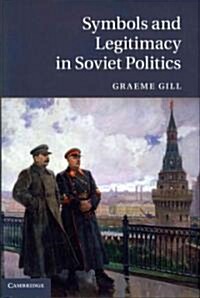
단행본
Symbols and legitimacy in Soviet politics
- 개인저자
- Graeme Gill
- 발행사항
- Cambridge ; New York : Cambridge University Press, 2011
- 형태사항
- vi, 356 p. ; 24 cm
- ISBN
- 9781107004542 (hbk.)
- 청구기호
- 929.07 G475s
- 서지주기
- Includes bibliographical references (p. 337-351) and index
소장정보
| 위치 | 등록번호 | 청구기호 / 출력 | 상태 | 반납예정일 |
|---|---|---|---|---|
이용 가능 (1) | ||||
| 1자료실 | 00015873 | 대출가능 | - | |
이용 가능 (1)
- 등록번호
- 00015873
- 상태/반납예정일
- 대출가능
- -
- 위치/청구기호(출력)
- 1자료실
책 소개
Symbols and Legitimacy in Soviet Politics analyses the way in which Soviet symbolism and ritual changed from the regime's birth in 1917 to its fall in 1991. Graeme Gill focuses on the symbolism in party policy and leaders' speeches, artwork and political posters, and urban redevelopment, and on ritual in the political system. He shows how this symbolism and ritual were worked into a dominant metanarrative which underpinned Soviet political development. Gill also shows how, in each of these spheres, the images changed both over the life of the regime and during particular stages: the Leninist era metanarrative differed from that of the Stalin period, which differed from that of the Khrushchev and Brezhnev periods, which was, in turn, changed significantly under Gorbachev. In charting this development, the book lays bare the dynamics of the Soviet regime and a major reason for its fall.
Analyses changes in Soviet political symbolism to explain a key dynamic behind the ultimate collapse of the Soviet system.
Analyses changes in Soviet political symbolism to explain a key dynamic behind the ultimate collapse of the Soviet system.
목차
1. Ideology, metanarrative and myth; 2. Formation of the metanarrative, 1917?29; 3. The Stalinist culture, 1929?53; 4. An everyday vision, 1953?85; 5. The vision implodes, 1985?91; 6. Impact of the metanarrative.
